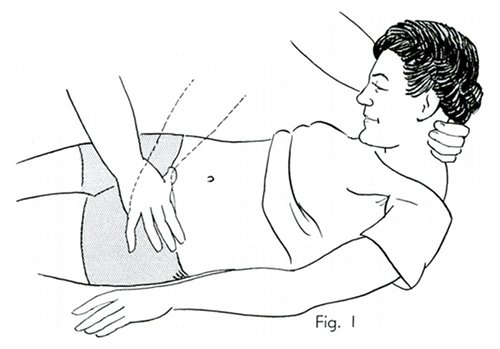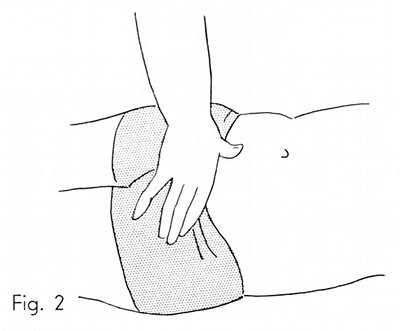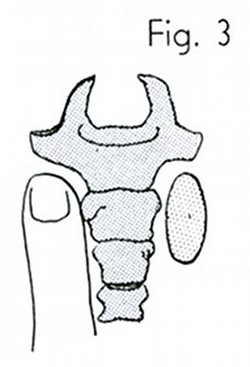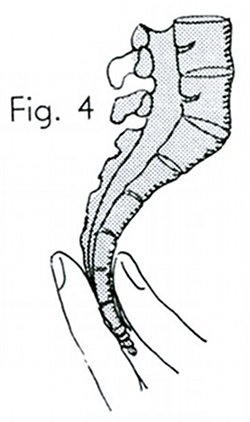|
Index of Transcribed Charts
Supplemental Essays
Contact Us
Acknowledgements
"Bumper Sticker" Quotes
Support DigitalDrStone!This site is a free service for Polarity Therapy practitioners, students and teachers, with the intention of expanding Polarity Therapy by making it more accessible. It is owned and operated by a non-profit organization, EnergySchool Foundation, with the support and permission of numerous other individuals and corporations as described in the Acknowledgements section. Please consider making a tax-deductible donation to support our continued presence by using this Paypal button to send a contribution.
Winner of the APTA "Outstanding Service Award" 2012
|
Polarity Therapy Volume 1, Book 2
Chart No. 19 - A Technique to Release Motor Energy Blocks Immediately Above the Pubis for Bladder-Urinary-Rectal-Uterine and Prostatic Trouble. Coccyx Correction for Piles and Coccygodynia.

Tension and soreness found in the rectus abdominalis [rectus abdominis] and the pyramidalis muscles usually means that the structures underneath are in trouble. Look for bladder, rectal, prostatic or uterine disturbance. However, the release of this tension above the pubis gives remarkable results. The thumb is placed over the spastic muscle, flat and level, like a rocker runner, to cover the area. Then with the other hand under the neck and the occiput, the body is raised gently for a good stretch. Hold it a moment.
Directional contacts on the contracted muscles next to the pubis, can be held without a neck stretch with good results. The lift is for coordinated correction and the release of heavy spastic muscles. One lift on the short leg side is usually sufficient at one treatment.
With the thumb close to the symphisis pubis [pubic symphysis] giving the contact an inferior as well as a posterior direction acts as a powerful correction for the superior pubis and shortens [lengthens?] the leg on that side. Muscle tension can be released on both sides but the inferior angle should only be used on the short leg side.
|

A correction of the anterior sacral base. Here the flat thumb is placed above Poupart's [inguinal] ligament, about its middle region, for directional pressure posteriorly on the anterior base of the sacrum. The head lift is used as above. This is applied to the opposite side of the short leg for the release of the anterior sacral base. It lengthens the short leg.
Contraction of tissues on either side of the coccyx is usually overlooked in most examinations because these lumps cannot be felt unless the tissue is engaged between the internal and external examining fingers. Spastic tissue at this vital spot interferes with the action of the ganglion of impar and its positive pole in the brain by reflex action. It is a vital factor in coccygodynia and hemorrhoids. For leg pains release the central energy blocks here.
|

Anterior surface of the coccyx
Lump may be found on either side.
|

This contracted tissue is the real motor energy block. One finger is inserted into the rectum to examine the anterior articulations of the coccyx and both sides for congested lumpy tissue. The first finger of the other hand slides along on the outside of the coccyx and tissues directly opposite the internal finger. It is between these two fingers examining with moderate pressure that many conditions are found which one finger alone would miss. For relief, the stagnant contracted tissues must be engaged between both fingers and the energy blockade released by pressure manipulation.
|
|
Book 2, Chart 18 ~ Book 2, Chart 20
|
|
|
American Polarity Therapy Association
Copyright 2012 EnergySchool Foundation
Text & images from Randolph Stone, Polarity Therapy Vol. I & Vol. II, CRCS PO Box 1460, Sebastopol, CA 95473
Thanks to the American Polarity Therapy Association and CRCS Publications for supporting this project.
|